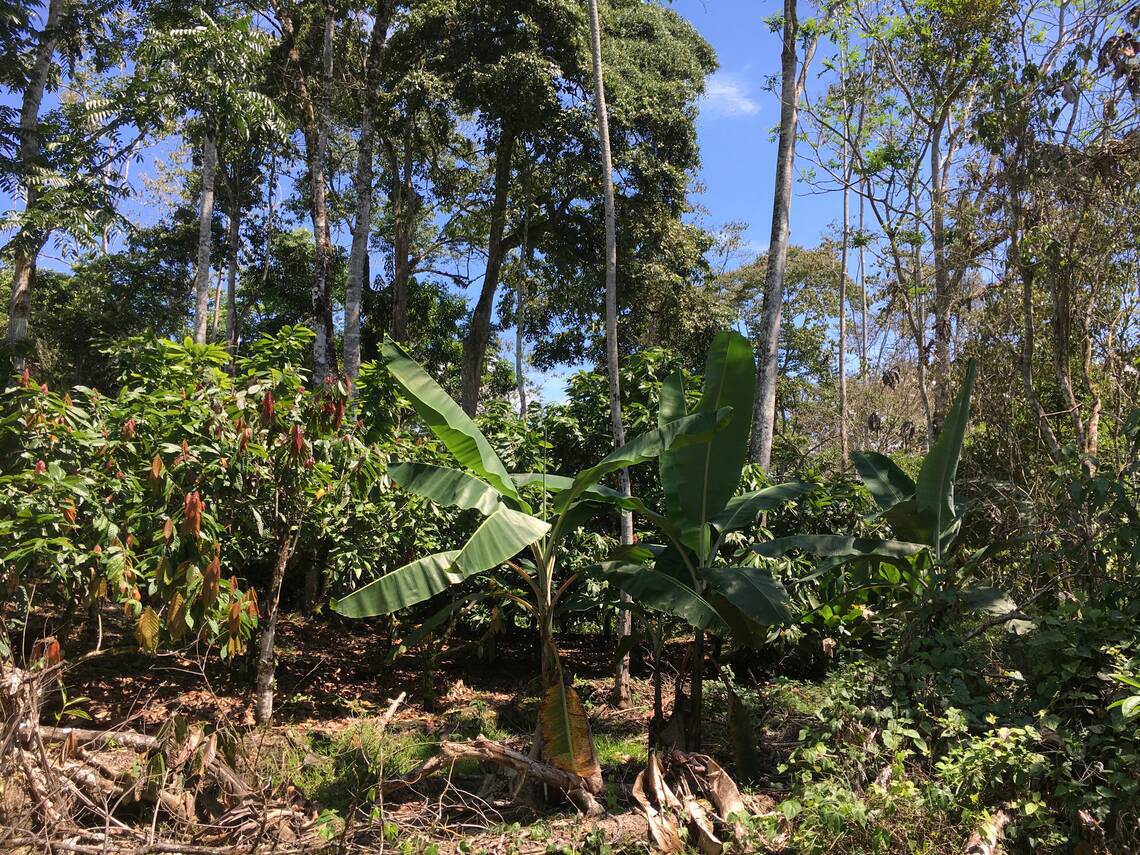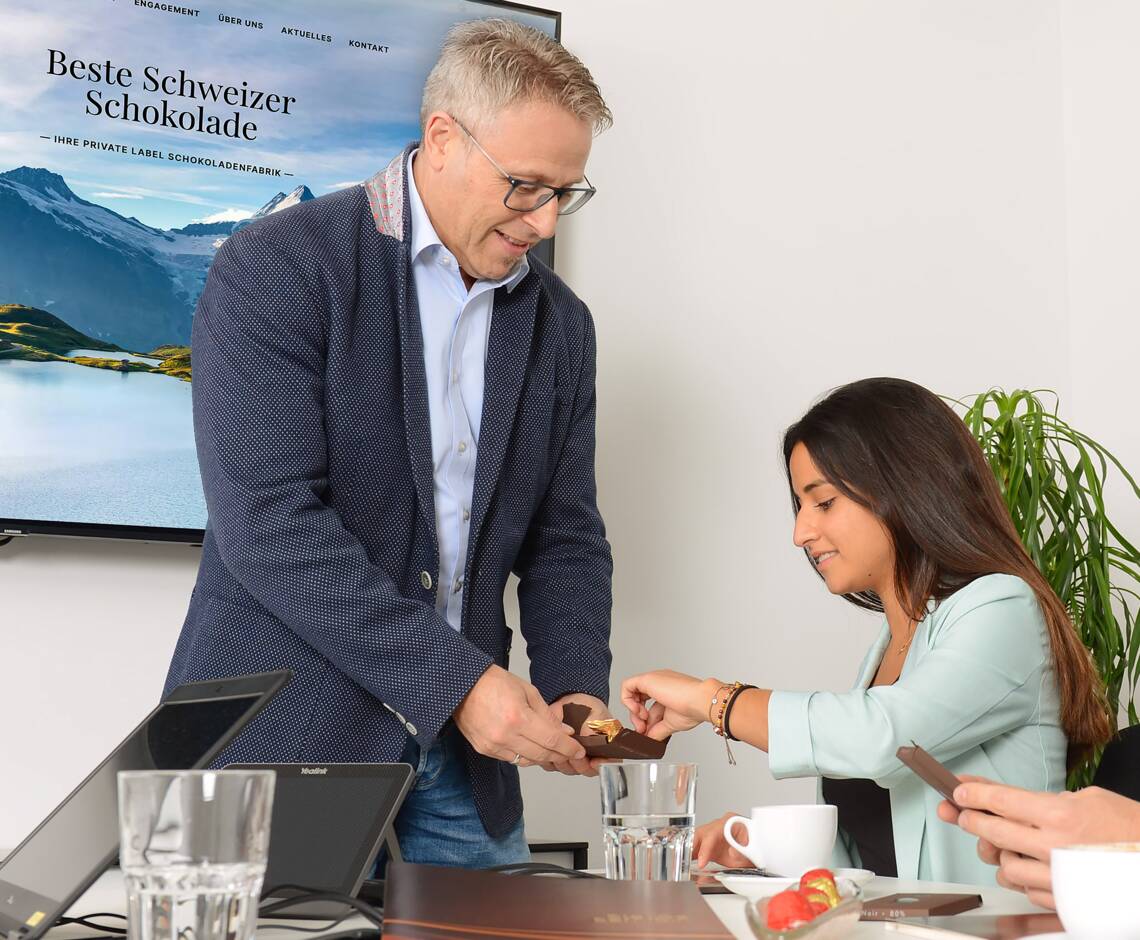Commitment
Saving resources
We pursue the goal of constantly optimising resource consumption and making it more environmentally friendly. Early on, we focused on organic raw materials and developed an energy concept to reduce and compensate for CO2 emissions. We use FSC-certified materials for our packaging.
Organic production
We are organic pioneers: in 1991, together with Pronatec, we developed Switzerland’s first organic chocolate. Experienced employees regularly provide on-site support and training to the farmers in our cooperatives. Certification of all organic standards and transparency in the supply chain are part and parcel of our business.

Compostable foil
Biodegradable foil made from wood
Foil made from renewable raw materials has been a key topic for some time, but it is only recently that a product has become available that is not made from food, such as corn, but from FSC wood.
Certified as compostable packaging
The foil is biodegradable and certified according to both the American standard ASTM D6400 and the European standard EN13432 for compostable packaging. In addition, the foil has also been tested according to the “OK compost HOME” scheme, proving its suitability for use in a home composting system.
Paperbased Flowpack
Make your product stand out from the crowd. Our Flowpack packaging is made of paper, and is sustainable and recyclable. In comparison to standard packaging options such as cardboard and foil, the Flowpacker uses a single type of packaging. You can choose from a variety of materials. Both paper with the unique Paper-ON design, as well as other films can be used. The cold seal process ensures your product remains packaged safely.
Our cartoning machine helps to achieve the perfect presentation, providing the option of automatically packaging products in cardboard displays. You can decide whether your product should be presented in an upright or flat position.
Downloads
FSC certification
On request, we use paper and cardboard made from FSC wood for the packaging of our chocolates. We use inks that are suitable for food packaging in our printing processes.
Conserving resources
Bernrain energy concept
Heat recovery saves energy and water. Back in 1980, a special system for recovering waste heat from specific production processes was developed at Chocolat Bernrain in Kreuzlingen. The system carries 800,000 litres of water in a closed circuit and covers most of the cooling and heating requirements. The system, which required high investment costs, also saves more than 98% of the previous network water consumption annually. Furthermore, it allowed CO2 emissions to be reduced significantly.
Stella energy concept
When Chocolat Stella was extended, a modern and efficient energy concept was implemented. To meet our energy demands we use groundwater in addition to two chillers or heat pumps. In summer, this system works mainly as a chiller to produce cold water. Approximately 70% of the required cooling capacity can be covered by direct groundwater cooling. Where possible, the waste heat is used for heating purposes or returned to the groundwater. In winter and cooler times of the year, heat can be extracted from the groundwater or the cooling water circuit and used for base-load heating. With the new system, Chocolat Stella is able to significantly reduce its consumption of fossil fuels and lower its CO2 emissions.
Energy consumption
Solar power generation: In spring 2013, a photovoltaic system was put into operation on the roof of the warehouse building in Kreuzlingen. It produces about 30,000 kWh of electricity a year and reduces our previous annual CO2 emissions by 18 tonnes each year. The remaining power consumption is fully covered by electricity from Swiss hydropower plants.
Cocoa, Trees & Climate Action
The project aims to boost climate resilience of Norandino's cocoa farmers. The project will promote sustainable agroforestry to support ecologically, economically, and socially sound cocoa farming. Objectives include carbon sequestration, biodiversity enhancement, higher farm income, and quality cocoa supply. The farmer-centric approach includes education and consulting of farmers, provision of seedlings, financial incentives, and promoting good agricultural practices. It prioritizes a farmer- centric approach and customizes agroforestry based on local conditions for optimized resource use and resilience.
More information SWISSCO Innovation Programme


